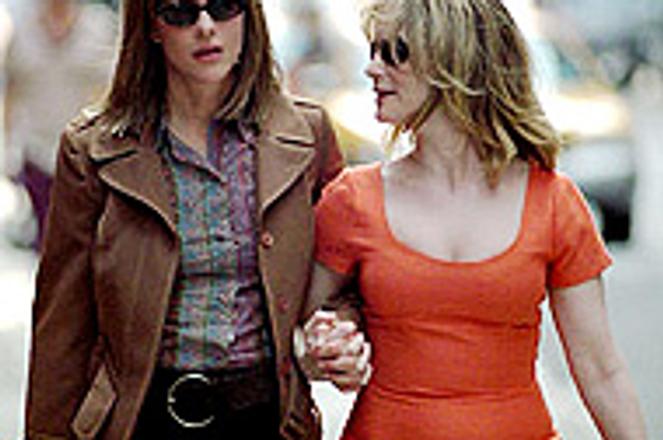LOOKING for love... in all the wrong places.photo: Itafilm
DURING the first half of Jane Campion's latest film, In the Cut, a character jokingly uses the cliché "If loving you is wrong, then I don't want to be right." Said drunkenly by one very heterosexual male cop to another, it is not meant to be taken seriously. Yet, the film, a story about the intense sexual relationship that develops between Frannie, a lonely female English teacher (Meg Ryan), and Malloy, a male homicide detective (Mark Ruffalo) who questions her while investigating a brutal murder, is meant to be taken very seriously.
Campion has described the film as "a modern love story... [set] amidst all the chaos and energy of the modern city". Indeed, it does deal quite directly with love, but in a way that embodies the first half of the above cliché: In the world of In the Cut, loving you (or seemingly anyone) is dangerously wrong.
Though set in present day New York, the film creates an atmosphere more commonly associated with the city's cinematic and mythological past: the tough, dark streets of 1970s movies like Taxi Driver and The French Connection, and the pre-Disneyfied Times Square of sex clubs (Frannie's half-sister Pauline, played by Jennifer Jason Leigh, lives above a strip bar).
The film has generated a substantial bit of controversy for its sexually explicit scenes and, in particular, for its casting of Hollywood good-girl Meg Ryan. True, the film does contain one fairly explicit scene near the beginning, but this does not directly involve Ryan and it does not go any further than anything that is regularly shown in contemporary French cinema.
Campion, in how she tries to explore love, desire, sex, and the way that they do and do not intertwine, seems to be after something similar to that of some of her French peers. Yet, for a movie that is ultimately supposed to be about finding love, it feels remarkably cold - though sometimes oddly compelling.
Because the film is set during the summer, this is not literal coldness. In the Cut depicts a steamy, sweaty, sticky world. But, whether intentionally or not, this heat does not feel sexual; it feels stifling and claustrophobic, an effect enhanced by the film's frequent use of jerky closeups and shallow focus photography, which suggests a world closing in on Frannie.
Frannie and Malloy do have charged sexual encounters, but they feel anything but erotic. Each is clearly in search of something, but is it love? And anyway, based on the film's many troubled, unstable characters (both past and present), is love even desirable? If this is modern love, then that is a very scary thing indeed.


